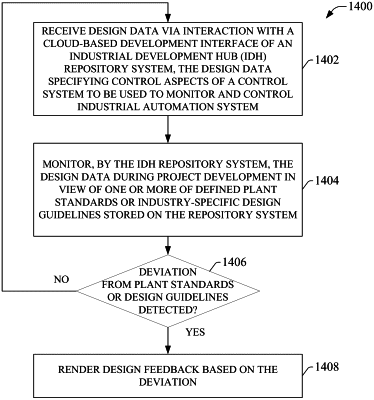| CPC G05B 19/4185 (2013.01) [G05B 19/4183 (2013.01); G05B 19/41865 (2013.01); G06F 8/71 (2013.01); G06F 11/1458 (2013.01)] | 20 Claims |

|
1. A system for developing industrial applications, comprising:
a memory that stores executable components; and
a processor, operatively coupled to the memory, that executes the executable components, the executable components comprising:
a user interface component configured to receive, via interaction with development interfaces rendered on a client device, design input comprising at least control code for one or more industrial devices that monitor and control an industrial automation system; and
a project generation component configured to generate control project data based on the design input, wherein the control project data is deployable to the one or more industrial devices to facilitate programming of the one or more industrial devices;
wherein
the project generation component is further configured to render, on the client device, design feedback during receipt of the design input based on comparison of the design input with control coding standards defined in association with the system, and
the control coding standards define preferences for control behaviors resulting from execution of the control code and preferred coding formats for the control code.
|